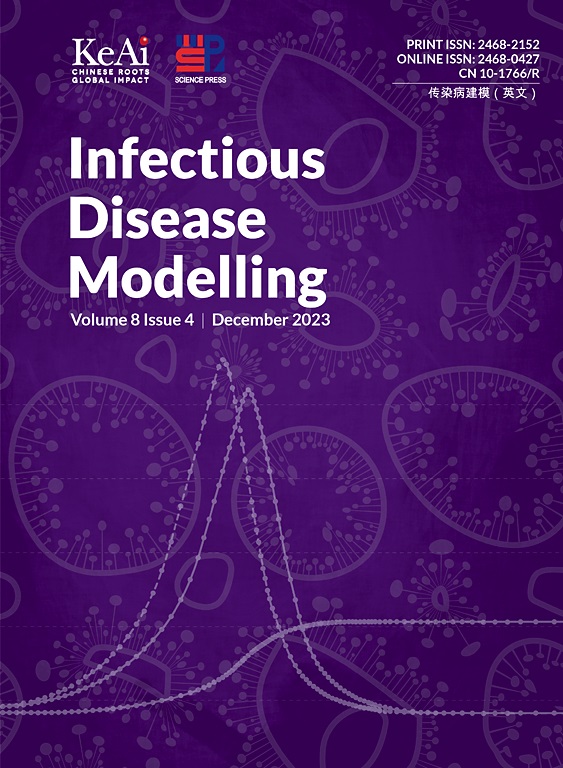因果推理模型在传染病研究中的应用和报告:系统综述
IF 2.5
3区 医学
Q1 Medicine
引用次数: 0
摘要
因果推理越来越多地应用于传染病流行病学。尽管在传染病研究中越来越多地采用因果推理方法,但尚未对其实施趋势、估计方法和关键规范进行全面审查。对这些方法在实践中如何应用进行系统的检查,既可以确定成功的策略,也可以确定常见的缺陷。本系统综述旨在描述因果方法在观察性ID研究中的使用和报告。因果方法在ID观测数据分析中的应用是通过PubMed、Medline、Web of Science和Scopus的系统搜索确定的。我们的分析重点是详细介绍因果推理方法的采用趋势,并评估其报告和出版在2010年至2023年间的全面性。在这172项研究中,大多数使用了基于倾向得分的方法(n = 133,77 %)。我们发现只有39项研究明确描述了因果框架的使用,并采用了因果分析的变体。使用因果方法的最常见原因是解决在ID研究中突出的时变变量。因此,常用的方法是利用边际结构模型进行逆概率处理加权;此外,有针对性的最大似然估计在最小化偏差方面已经变得流行。在ID研究中,报告因果关系的方法有很大的差异。需要制定报告准则,以便明确报告,同时培训如何在观察性ID研究中使用和评估因果推理的应用。这对ID建模尤其重要,因为时变因素和复杂的传输和治疗动态往往需要复杂的建模方法。本文章由计算机程序翻译,如有差异,请以英文原文为准。
Applications and reporting of causal inference modelling in infectious disease studies: A systematic review
Causal inference is increasingly employed in infectious disease (ID) epidemiology. Despite the increasing adoption of causal inference methods in infectious disease research, there has been no comprehensive review of their implementation trends, estimation approaches, and key specifications. A systematic examination of how these methods were being applied in practice could identify both successful strategies and common pitfalls. This systematic review aimed to describe the usage and reporting of causal methods in observational ID studies. The applications of causal methods in the analyses of ID observational data were identified from systematic searches of PubMed, Medline, Web of Science, and Scopus. Our analysis focused on detailing the adoption trends of causal inference methods and assessing the comprehensiveness of their reporting and publication between 2010 and 2023. Of the 172 studies, the majority utilised propensity score-based methods (n = 133, 77 %). We identified only 39 studies that explicitly described the use of causal frameworks and employed variations of causal analyses. The most common reason for using causal methods was to address time-varying variables that are prominent in ID research. Consequently, a common approach used was inverse probability treatment weighting with the marginal structural model; additionally, targeted maximum likelihood estimation has become popular in minimising bias.
There is substantial variation in reporting causal methods in ID research. Development of reporting guidelines is needed for clear reporting alongside training on how to use and appraise applications of causal inference in observational ID research. This is particularly important for ID modelling, where time-varying factors and complex transmissions and dynamics of treatment often necessitate complex modelling approaches.
求助全文
通过发布文献求助,成功后即可免费获取论文全文。
去求助
来源期刊

Infectious Disease Modelling
Mathematics-Applied Mathematics
CiteScore
17.00
自引率
3.40%
发文量
73
审稿时长
17 weeks
期刊介绍:
Infectious Disease Modelling is an open access journal that undergoes peer-review. Its main objective is to facilitate research that combines mathematical modelling, retrieval and analysis of infection disease data, and public health decision support. The journal actively encourages original research that improves this interface, as well as review articles that highlight innovative methodologies relevant to data collection, informatics, and policy making in the field of public health.
 求助内容:
求助内容: 应助结果提醒方式:
应助结果提醒方式:


